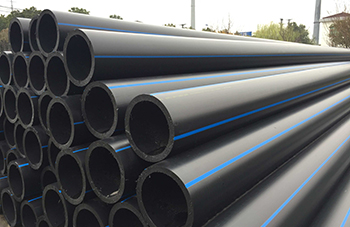Demand driving up GCC plastics sector
01 December 2018
The plastic pipes and fittings market in the GCC is gaining strength with construction in the real estate and industrial sectors driving demand upward.
In the UAE, this market sector is heading towards consolidation with the top five manufacturers accounting for the majority of the market revenue.
According to Ken Research’s latest report on the outlook for the plastic pipes and fittings market, the UAE plastic pipe and fittings market is expected to register a positive compound annual growth rate (CAGR) of more than five per cent during the period 2017-2022 reaching more than $625 million with organised players expected to gain further share in the market.
Real estate and infrastructural development, industrial growth, growth in public sector spending and rise in private investments are the major factors that are likely to drive the market in the future.
Demand for unplasticised polyvinyl chloride (uPVC) pipes is likely to grow further, the report says, owing to the expected growth of residential and commercial real estate in the country. Polyethylene (PE) pipes are likely to witness the highest growth rate due to increasing application in various industries and gradual replacement of PVC pipes in many industries with PE pipes.
“The introduction of local green building codes like Estidama in Abu Dhabi and Sa’fat in Dubai and international equivalent systems like Leadership in Energy and Environmental Design (Leed) and Building Research Establishment Environmental Assessment Method (Breeam) has led manufacturers to utilise construction materials which are recyclable. This is likely to further propel the plastic pipe and fittings industry towards innovation and research for environment-friendly materials,” says an analyst at Ken Research.
The entry of some small-scale manufacturers and traders is also likely to take place, further promoting import and export of plastic pipes and fittings from the UAE.
In terms of application, water supply and sewage applications will continue to be the dominant end-user industry followed by plumbing, chemical and oil and gas, irrigation and others, respectively.
In Saudi Arabia, the plastic pipe and fittings market is expected to evolve with the increase in domestic production capacity. The country’s Vision 2030, under which the government aims to diversify the kingdom’s economy away from oil and support growth, is driving the construction materials and pipes industry.
The Saudi economy is resurgent with the expected recovery in the oil prices, and the construction industry will continue to expand with investments in infrastructure, residential, water and energy projects.
Construction of affordable housing units is also expected to see on upsurge as the government plans to increase the proportion of Saudi families owning their homes from 47 per cent in 2016 to 52 per cent by 2020.
“The plastic pipes and fittings market in Saudi Arabia is expected to grow at a great pace on account of infrastructure growth owing to large public and private investments, tourism and related real estate developments and water projects in the kingdom,” says an analyst at Ken Research.
According to the report, the market is transitioning in preference for plastic type from PVC to PE pipes. It is estimated that the water supply and sewage sector will continue to contribute the highest share of revenue of plastic pipes and fittings sector.
PPR (polypropylene random copolymer) and PE pipes producers in the country will increase production to satisfy local demand and this will reduce the proportion of imports in terms of volume.
Meanwhile, in Oman, the plastic pipe and fittings market is in the late growth stage and is mainly driven by innovation which has increased the pressure and temperature bearing capacity of these pipes, Ken Research says.
It is anticipated that the PE pipes market will grow at the fastest pace among all the types of plastic pipes and will be mainly due to surge in demand from end-user application. The use of PVC pipes is expected to reduce due to substitution by other types of plastic pipes.
“The market share of the organised sector manufacturers is expected to increase further by 2022. Domestic production is expected to grow as many manufacturers are expected to increase their capacity to meet the increased demand for plastic pipes in the near future. The market for plastic pipes used in the oil and chemicals industry along with water supply and sewage pipelines is expected to grow at a faster pace among other end-user applications,” says the report.
Industrial growth, increased commercial activity, rise in public sector spending, and private investments are some of the factors that will drive the market in the near future.
An increased focus on the environment and improvement in return on investment are among the major reasons for high demand for plastic pipes and fittings application in domestic and industrial application.
Analysts at Ken Research believe that in the GCC, reduction of wastage and spillage while manufacturing, keeping up with advanced technology, tracking upcoming government and private construction projects, establishment of research and development centres for plastic resins and increased awareness about new types of plastic pipes will help in maximising the delivered value to the end users. Manufacturers should focus on increasing the perceived value of their products by communicating the long-term benefits of their products, they add.



